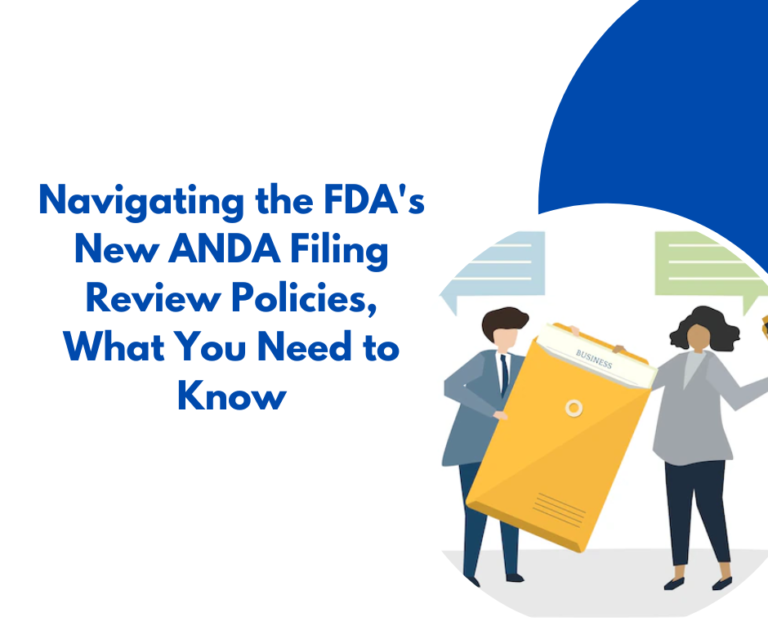Navigating the FDA's New ANDA Filing Review Policies: What You Need to Know
The US Food and Drug Administration (FDA) has recently implemented significant updates to its policies regarding the review process for Abbreviated New Drug Applications (ANDAs). This move marks the first comprehensive revision since 2017, and these changes officially took effect on October 3, 2023.In essence, the FDA meticulously evaluates each submitted ANDA on an individual basis to determine its suitability for acceptance. The agency defines a received ANDA as one that meets the threshold requirement of being a substantially complete application, one that appears sufficiently comprehensive for substantive review. To be “substantially complete,” an ANDA must include all the necessary elements outlined in section 505(j)(2)(A) of the Federal Food, Drug, and Cosmetic Act (FD&C Act), while also lacking any of the deficiencies described in 21 CFR 314.101(d) and (e).

Following this initial evaluation, the reviewer will make a decision on whether to accept the ANDA or if it necessitates further work. If additional information is required, the reviewer will issue an Information Request (IR) to the applicant, giving them an opportunity to address the identified deficiencies. Alternatively, the reviewer may choose to issue a refuse-to-receive notification.
The revised policy introduces an updated ANDA Filing Checklist, which serves as a valuable tool for Division of Filing Review (DFR) Reviewers in their assessment of the information and data within ANDA submissions. This new checklist comprises various modules that assist DFR reviewers in identifying the required and recommended content for each application:
Module 1: Focuses on administrative information, including signatures, patent certifications, exclusivity certifications, and the comparison of the proposed product to the reference drug.
Module 2: Examines data summaries, encompassing bioequivalence and dissolution data for each proposed strength.
Modules 3.2.S and 3.2.P: These sections delve into drug substance and product information, such as molecular characterization and data related to drug manufacturing. It also covers packaging details, including specifications, test data for components, packaging configurations, sizes, container closure testing, and supplier information. Additionally, stability data for the finished dosage form, expiration dating period, post-approval stability protocol, commitment, and batch numbers are included here.
Module 3.2.R: Relates to regional information, with a focus on executed batch records, manufacturing and packaging reconciliation, and methods validation (if applicable). Notably, the revised MAPP does not include Module 4.
Module 5: Addresses clinical data, encompassing pharmacokinetic studies, bioequivalence assessments, in vitro testing, safety profiles, adverse event data, and Institutional Review Board information. This module also allows the reviewer to list any deficiencies found during the review process and to document whether the ANDA has been received, issued an IR, or issued a refuse-to-receive notification.
It’s important to note that certain items on the reviewer’s checklist, although recommended in guidance or elsewhere to aid applicants in preparing high-quality ANDAs, are not considered “threshold” matters for determining the completeness of an ANDA.
These items include a cover letter summarizing the submission, special requests, and application-specific references; notation of any required Risk Evaluation and Mitigation Strategy (REMS) in the cover letter; requests for proprietary product names; Type II Drug Master File numbers for active pharmaceutical ingredients; tabular formatting for lists of impurities and potential degradation products; certificates of analysis for test and reference products of bioequivalence strength; and case report forms (though clinical data files should describe all patients excluded from the analysis population, any protocol deviations, or any serious adverse events).
These updates to the FDA’s ANDA filing review policies aim to enhance the efficiency and effectiveness of the generic drug approval process, ultimately benefiting both consumers and pharmaceutical manufacturers.
If you need expert consultation on these changes or related regulatory matters, contact us today for guidance and support Consult RABT Global.

